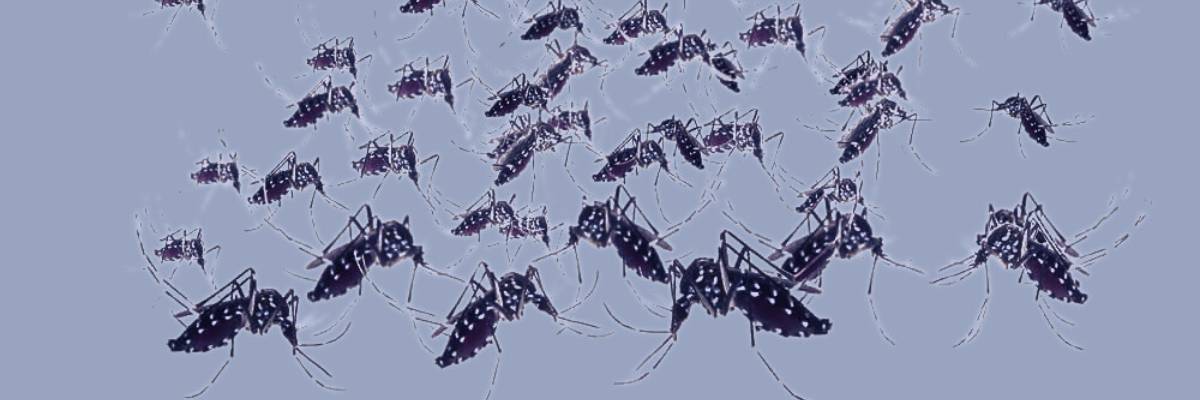A female mosquito in need of a blood meal to provide protein for her eggs will search for a host. This will be a human or an animal.
As they often bite at night, how do they find their hosts? Do they have a good night view, or do they have other senses they use to find a human target?
In this article, you will learn how a female mosquito finds a human and whether she can see at night
How Do They Find Humans?
Mosquitoes use vision along with other sensory information to locate a human. To find out how these cues interact, scientists conducted experiments in a wind tunnel with mated female Aedes aegypti mosquitoes. Different sensory cues, carbon dioxide, a dark object, heat, and moisture, were controlled to establish how a mosquito reacts to each.
Mosquitoes were released into a wind tunnel, and the flight trajectories were recorded using a three-dimensional real-time tracking system.
Carbon Dioxide
When humans or other animals breathe, they exhale carbon dioxide. Mosquitoes are attracted by the odor and have receptors that can detect CO2.
In the tests mentioned above, the scientists tested the mosquitoes with a CO2 plume imitating the exhaled breath of a human. The mosquitoes followed the plume as expected. Exposing female mosquitoes to CO2 produces sustained flight.
They also tested using air with no CO2 and found that the female mosquitoes didn’t have any tracking behavior. They flew around the ceiling and walls of the tunnel.
On the floor of the wind tunnel, there was a high contrast dark spot. The female mosquitoes exposed to clean air paid little attention to the spot, but those with the CO2 plume spent much of their time exploring the spot, even though it was a few inches below the carbon dioxide plume.
This shows that CO2 activates an attraction to visual features.
Something that may interest you, they also tested male mosquitoes with a clean air plume and a CO2 plume in the wind tunnel with a high contrast spot. The males explored the visual feature with or without CO2. This shows that CO2 does not create an effect on males’ visual senses.
The influence of CO2 is specific to females and related to their blood-seeking activities.
Mosquito Vision
Mosquitoes see with their two compound eyes. Compound eyes are found in many insects and they consist of hundreds of ommatidia per eye.
Each ommatidium has several photoreceptors that are sensitive to varying light intensity. It is thought that night-biting mosquitoes can adjust to different light intensities, improving visual sensitivity to a potential host in the dark.
The eyes may sense a host’s visual features and allow for flight navigation towards the host. But as mentioned above, this only seems to be the case if carbon dioxide is present.
Thermal Attraction
After establishing that mosquitoes require carbon dioxide to “see” their hosts, the scientists wanted to understand how female mosquitoes used thermal information in their quest for blood.
In the wind tunnel, the scientists placed two glass objects, one heated to 98.6°f (37°c) to represent human body temperature, and the other remained at room temperature. The mosquitoes preferred the object heated to 98.6°f when either in the CO2 plume or in clean air.
The results show that the presence of CO2 doesn’t have any direct effect on the preference for warmth.
Humidity
Water vapor from perspiration has also been cited as a cue when a female mosquito is searching for a host. The researchers tested this by adding a small dish with a humid wipe over the glass object.
The mosquitoes showed a stronger response to the warm objects with humidity. Suggesting that humidity over a warm object may be more important than heat alone. This would enable mosquitoes to differentiate between solid objects heated by the sun and animals or humans.
Conclusion
The experiments show that female mosquitoes use several sensory cues when searching for a host. Their vision plays an important role but alone doesn’t allow them to find a host.
First, the female mosquito needs to sense a plume of carbon dioxide. It is thought mosquitoes can detect the CO2 from a human as far as 165 feet (50m) away. They follow the carbon dioxide until they are close enough to see their target.
The carbon dioxide triggers mosquitoes to explore visual elements in their environment. They may start to see their target at a distance of about 15-52 feet (5-15 meters). This ensures they don’t waste their time and energy searching for useless targets.
Guided by the visual cues, the female will then sense the humidity and heat radiated by the host as she approaches. Other olfactory cues will also be used and guide the mosquito to decide whether to land or not. The different skin odors may direct the mosquito to a certain area of our body, like our feet or ankles.

